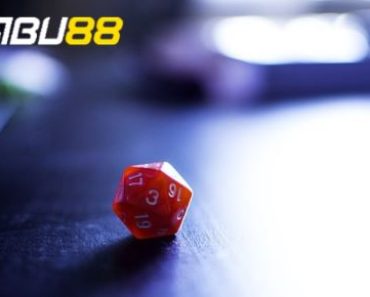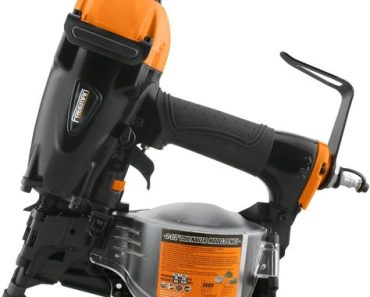Japanese samurai armor, or “yoroi,” is one of the most iconic symbols of Japan’s rich cultural history. Designed to protect the samurai in battle while offering mobility and flexibility, this armor reflects the samurai’s dedication to honor, loyalty, and martial skill. This article delves into the unique characteristics, evolution, and significance of Japanese Samurai Armor, exploring the legacy it leaves behind in today’s modern world.
The Origins of Japanese Samurai Armor
The samurai were the warrior class of feudal Japan, and their armor evolved significantly over the centuries to meet the demands of battle. While the earliest forms of protective wear date back to the 4th century, it was during the Kamakura period (1185–1333) that samurai armor truly began to take shape. As Japan experienced internal conflicts and warfare, the need for advanced protection became paramount.
Early Samurai Armor and Its Evolution
The earliest forms of samurai armor were heavily influenced by Chinese and Korean designs. These armors, made primarily of leather and iron, provided basic protection from arrows and swords. Over time, as warfare techniques evolved and new weapons were introduced, so too did the armor worn by the samurai. During the Heian period (794–1185), the traditional “ō-yoroi” was developed, offering better protection while allowing greater movement for mounted samurai.
The Rise of ō-yoroi
The ō-yoroi, meaning “great armor,” was one of the first true samurai armors. It was specifically designed for cavalry soldiers and provided comprehensive protection from arrows. Constructed primarily of iron plates tied together with silk and leather, the ō-yoroi had a boxy shape that allowed for easy movement while riding horses. The helmet, known as a kabuto, was especially important, as it protected the head and provided a unique look with a distinctive crest.
The Muromachi Period: Advancements in Armor
As Japan transitioned into the Muromachi period (1336–1573), the nature of warfare changed significantly. Battles were no longer fought primarily by mounted archers; instead, infantry became more common. This shift led to the development of new types of armor, such as the dō-maru and the haramaki.
Dō-maru and Haramaki: Flexible Armor for Foot Soldiers
Dō-maru was a lighter, more flexible version of armor that allowed greater mobility for foot soldiers. Unlike the ō-yoroi, which was cumbersome and designed primarily for cavalry, the dō-maru was worn by foot soldiers and embraced a sleeker design. This type of armor was more affordable and easier to wear, making it popular among lower-ranking samurai.
The haramaki armor, similar to the dō-maru, also provided flexibility and ease of movement. It wrapped around the body, allowing soldiers to remain agile while still receiving protection from weapons. As conflicts increased during this period, both dō-maru and haramaki became essential in the samurai’s wardrobe.
The Sengoku Period: The Golden Age of Samurai Armor
The Sengoku period (1467–1615), known as the Warring States period, saw the height of samurai warfare. This era was marked by continuous battles between warlords, leading to significant advancements in samurai armor design. Samurai armor became lighter, more durable, and better suited for extended campaigns. The “gusoku” was the result of these innovations.
Gusoku: The Armor of the Samurai Elite
Gusoku was a more modern, practical form of samurai armor that integrated the best elements of previous designs. Made of lacquered iron plates and tied together with silk cords, gusoku was lighter and more flexible than its predecessors. It provided excellent protection while allowing for greater movement on the battlefield.
Gusoku armor was not only functional but also a symbol of status. Each set of armor was often personalized, with intricate designs, family crests, and even vibrant colors. The armor reflected the samurai’s rank and personal wealth, making it as much a statement of prestige as a tool for combat.
Key Components of Japanese Samurai Armor
Each set of samurai armor was a carefully crafted masterpiece, consisting of several key elements designed to protect different parts of the body.
Kabuto: The Samurai Helmet
The kabuto, or helmet, was one of the most distinctive and important pieces of samurai armor. Made of iron and often adorned with a family crest or ornament, the kabuto protected the head during battle. Some kabuto featured intricate designs, such as horns or facial masks, to instill fear in enemies and convey power.
Dō: The Chest Armor
The dō was the breastplate that protected the torso. Typically made from iron or leather, it was tied with silk cords for flexibility. The design of the dō varied over time, with some featuring intricate engravings that reflected the samurai’s status.
Kote: Arm Guards
The kote were protective sleeves worn over the arms, made from a combination of iron and leather. They were essential for safeguarding the arms from sword strikes and other weapons.
Haidate and Suneate: Leg Protection
Haidate and suneate were designed to protect the lower body. Haidate was a type of thigh guard, while suneate protected the shins. Both were crucial for maintaining mobility while offering essential protection in close combat.
Symbolism and Rituals of Samurai Armor
Samurai armor was more than just a tool for war; it was imbued with deep symbolic and spiritual meaning. Each piece of armor represented the samurai’s values of loyalty, bravery, and honor. Before heading into battle, samurai would perform rituals, donning their armor with the belief that it provided spiritual protection in addition to physical defense.
Many sets of armor were passed down through generations, becoming treasured family heirlooms. The detailed craftsmanship of the armor, often adorned with clan symbols or religious motifs, made it a unique representation of the samurai’s legacy.
The Influence of Samurai Armor on Modern Culture
Though samurai warfare ended in the 19th century with the Meiji Restoration, the impact of samurai armor endures. Today, it continues to influence popular culture, art, and fashion. Many collectors and enthusiasts seek to own replicas of Japanese samurai armor, appreciating its blend of functionality and beauty.
Samurai armor has also inspired designs in movies, video games, and even modern-day military equipment. The aesthetic appeal of the armor, coupled with the rich history it represents, keeps the legacy of the samurai alive in contemporary times.
Where to Find Authentic Samurai Armor Today
For those interested in owning a piece of history, authentic and replica Japanese samurai armor is available from specialized dealers. These armors are often made by traditional artisans who follow the age-old techniques used by the samurai themselves. Collecting samurai armor has become a way to connect with Japan’s storied past and celebrate the craftsmanship that defined an era.
For enthusiasts and collectors looking for genuine or high-quality replica pieces, visit Japanese Samurai Armor to explore a curated collection of armor sets that honor this historical tradition.
Conclusion
Japanese samurai armor is a testament to the skill, artistry, and martial prowess of the samurai class. Its evolution reflects the changing nature of warfare, while its intricate designs symbolize the deep cultural values of feudal Japan. Whether as a piece of history or an artifact of beauty, samurai armor continues to captivate the imagination and remind us of Japan’s rich martial tradition.





